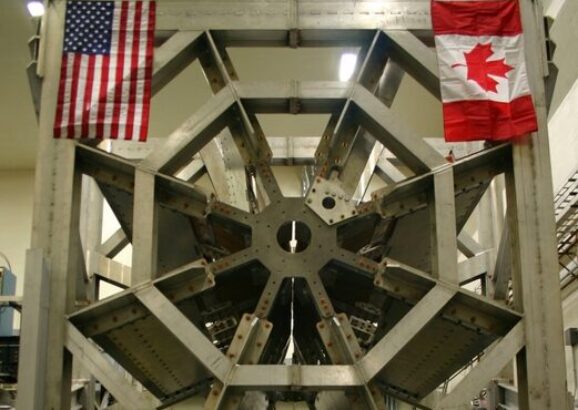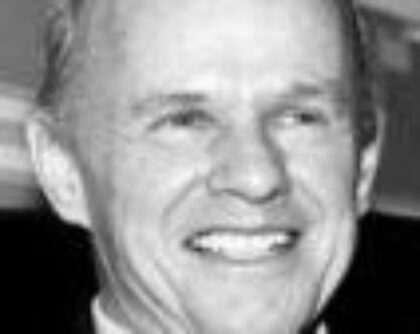Stanley B. Kowalski PhD ’63
Research Interests
Professor Kowalski’s current research program is centered on parity violation experiments using longitudinally polarized high energy electron scattering. The measurements are carried out in Mainz Germany and Jefferson laboratory in the United States. These studies have been under way for more than a decade and have two main goals. One goal is to probe the strangequark structure of the nucleon. A series of measurements now show that the contribution of strange quarks to the charge and magnetic moment of the proton is close to zero. The second goal is to make a precise measurement of the weak charge of the proton. This would measure sin2 θW and be sensitive to new physics beyond the Standard Model at energy scales greater than 5 TeV LHC energies. Initial preliminary results show that the weak charge is consistent with predictions of the Standard Model.
Biographical Sketch
Prof. Stanley Kowalski was born in Saskatchewan, Canada. He received his BE (1957) in Engineering Physics and an MS (1958) in Physics from the University of Saskatchewan. He came to MIT as a graduate student in 1958 and received his PhD in Physics from MIT in 1963. He joined the faculty in the MIT Department of Physics in 1964, progressing to Professor of Physics in 1985. In 1991 he was appointed Director of the William H. Bates Linear Accelerator Center and was responsible for managing the research program at this DOE university facility.
Prof. Kowalski’s career at MIT was centered on accelerator physics and nuclear physics research. In the late 60’s, he focused his efforts on the design, construction, commissioning and operation of the new Bates 1 GeV electron linear accelerator. This also included the design of the spectrometer systems which were at the heart of the nuclear physics program. He led several efforts to design and develop magnetic spectrometer systems for use in nuclear research and for medical applications. He invented unique analytic tools which greatly facilitated the design of such instruments. One important set of instruments pioneered the use of energy-loss spectrometry for electron scattering with very high resolution (10-4 Δp/p) at high luminosity. Research operations at Bates began in 1973 and the laboratory set the world standards in high resolution electron scattering throughout the 70’s.
In the early 80’s, Bates pioneered the use of polarized electron beams which were used to probe nucleon and nuclear structure. This new development revolutionized the field of electron scattering studies in the world. It allowed physicists to probe very small amplitudes sensitive to the proton and neutron charge and magnetic distributions, strangeness content of the nucleon and also provided very sensitive tests of the Standard Model at the energy level of the Large Hadron Collider (LHC).
During the past twenty years Prof. Kowalski concentrated his research efforts on longitudinally polarized electron scattering studies. A leading experiment was SAMPLE started at MIT-Bates in 1990. This was an experiment measuring parity violation. Such measurements were also later continued at Jefferson Lab and at Guttenberg University in Mainz, Germany. These studies had two main goals. One goal was to probe the strange quark structure of the nucleon. A series of measurements now show that the contribution of strange quarks to the charge and magnetic moment of the proton is close to zero. The second goal was to make a precise measurement of the weak charge of the proton. This would measure sin2 θW at low Q2 and could be sensitive to new physics beyond the Standard Model at energy scales greater than 5 TeV, LHC energies. Initial results show that the weak charge is consistent with predictions of the Standard Model. The measurements were particularly challenging with measured asymmetries at the level of 350 ppb. The success of this experiment now points to a very challenging future measurement of the weak charge of the electron where the expected asymmetries are two orders of magnitude smaller.
In addition to his research, Prof. Kowalski devoted substantial efforts to his classroom teaching and supervision of undergraduate and graduate students and post-docs. Physics courses included both undergraduate and graduate classes. There were both large lecture courses and smaller sections as well. A large class like 8.01, Classical Mechanics, includes up to 700 students. He always enjoyed teaching and his educational involvement with MIT students.
Prof. Kowalski has served as a member of several Institute advisory committees and many national and international review committees for government agencies and several scientific institutions. These included major projects such as the SLAC B-Factory and the MSU Facility for Radioactive Ion Beams for DOE and NSF. The first was an unqualified scientific success and the latter is currently under construction. Additionally, he organized and chaired several national and international physics conferences. He received a Humbolt Fellowship and is a Fellow of the American Physical Society (APS).

Understanding the proton’s weak side
Research from the Qweak experiment provides a precision measurement of the proton’s weak charge. narrows the search for new physics.
Awards & Honors
- 1990 // American Physical Society Fellow "For substantially advancing the capabilities for high-resolution nuclear spectroscopy at intermediate energies and for precision studies of nuclear structure and dynamics with electron scattering."
